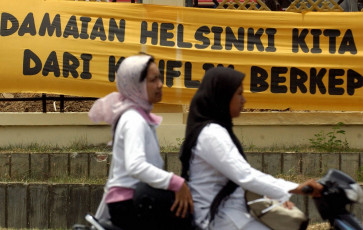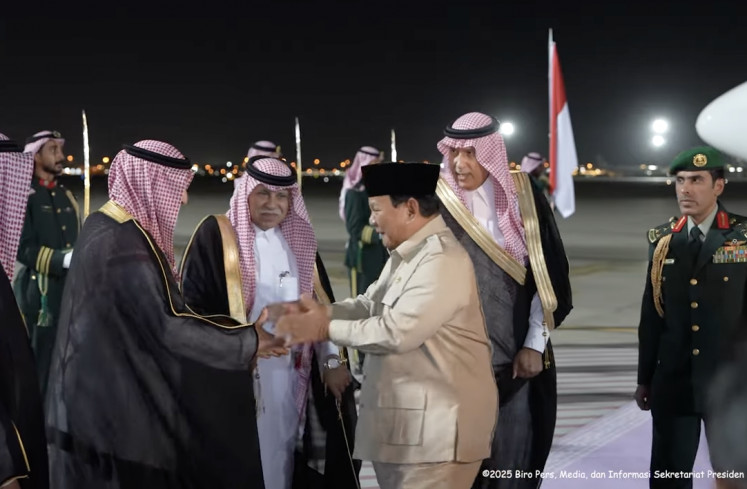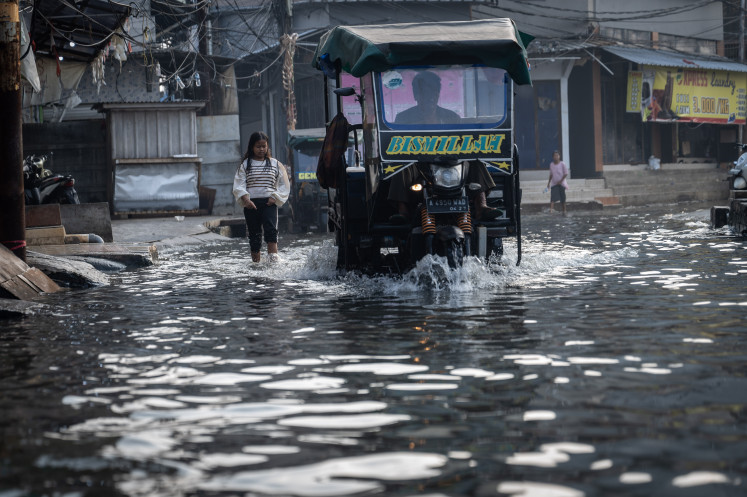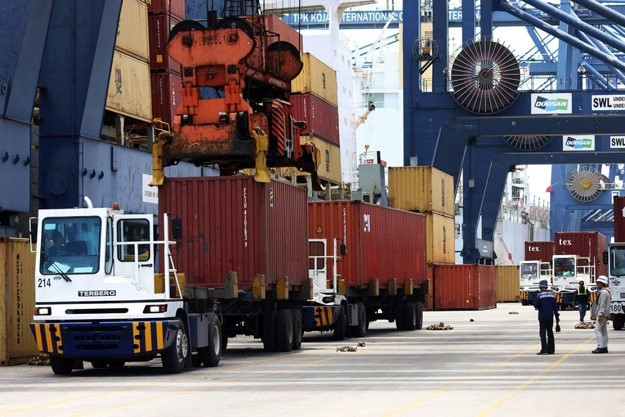Popular Reads
Top Results
Can't find what you're looking for?
View all search resultsPopular Reads
Top Results
Can't find what you're looking for?
View all search resultsBaby dies, thousands sick as smog spreads
Trip to nowhere: Students travel on a motorboat on the Ogan River, South Sumatra, on Monday in thick smog caused by land and forest fires
Change text size
Gift Premium Articles
to Anyone

T
rip to nowhere: Students travel on a motorboat on the Ogan River, South Sumatra, on Monday in thick smog caused by land and forest fires. The Palembang administration has issued a circular on school-hour changes to anticipate the effects of haze from the fires on child health.(Antara/Mushaful Imam)
Forest fires in Sumatra and Kalimantan that have blanketed the regions with smog for weeks and affected the health of thousands of people in the affected provinces, as well as air quality in neighboring countries, took an added toll on Sunday when a 4-month-old infant named Elsa Fitaloka reportedly died of pneumonia and meningitis.
“The haze particles can be the medium to spread the bacteria that can cause the infection,” said the director of Ar-Rasyid Hospital in Palembang, South Sumatra, Toni Siguntang. The infant had received some medical treatment from the hospital before her condition worsened over the weekend.
The Health Ministry recorded that 106,550 patients in Palembang, 61,147 in Jambi City, 23,324 in Palangkaraya in Central Kalimantan and 9,512 in Pekanbaru in Riau were suffering from acute respiratory infections caused by the smog produced by fires.
Meanwhile, about 100 flights have been canceled by major airlines such as flag carrier Garuda Indonesia and its low-cost subsidiary Citilink, as well as Lion Air Group’s Lion Air, Wings Air and Batik Air, since visibility in the sky over Kalimantan has worsened, making flight unfeasible and even downright impossible.
“As of Saturday, the visibility is limited to only 500 meters, whereas the visibility considered safe for landings is 3,500 meters,” said Bambang Hartanto, the head of Kalimarau Airport in Berau, East Kalimantan.
Separately, President Joko "Jokowi" Widowo, who spoke of the smog crisis on Monday night, said he had ordered that cloud seeding operations be intensified and that all stakeholders cooperate to overcome the problem.
Jokowi highlighted the importance in the future of all elements of all administrations being able to detect hot spots early.
Despite the widespread impact of the forest fires, Indonesia still insists that the problem is under control and is reluctant to accept a helping hand offered by neighboring Malaysia.
Last week, Malaysian Energy, Science, Technology, Environment and Climate Change Minister Yeo Bee Yin wrote in a Facebook post that “We will be sending diplomatic notes to Indonesia to underscore the seriousness of haze, as well as to emphasize the urgency in putting out the fires".
Malaysia itself has carried out cloud seeding to induce rainfall to wash away the thick smoke blanketing the region.
“Malaysia has offered to provide any support needed to the Indonesian government. Cloud seeding will be done whenever the cloud situation is suitable in areas where air quality is bad,” Yeo said on Sunday.
In response to the Malaysian offer, the spokesperson of the National Disaster Mitigation Agency (BNPB), Agus Wibowo, said the country was highly appreciative of it, but would not accept it just yet.
“Indonesia can still handle the problem. The central government is currently working hand in hand with local administrations, as well as businesses, to put out the fires,” Agus told The Jakarta Post on Monday.
He said that at least 9,072 personnel from the agency and the security forces had been deployed to the fire-affected regions of Riau, Jambi, South Sumatra, West Kalimantan, Central Kalimantan and South Kalimantan to detect and douse flames. A total of 44 water-bombing helicopters had also been mobilized.
Separately, a coalition of civil society organizations, Pantau Gambut, which had just returned from a field survey in Riau, revealed that the number of hot spots in the region had tripled to 3,932 from July to August this year as compared to the 1,862 hot spots recorded in the same period in 2015.
“The Air Quality Index in Pekanbaru [the capital of Riau] shows very concerning results. The city’s air quality as of Sept. 13 can even be categorized as ‘extremely unhealthy’ as smoke resulting from wildfires contains dangerous gasses and particles, such as carbon monoxide, nitrogen oxide, sulfur dioxide and other things,” Pantau Gambut said in a press statement.
Data compiled by the Meteorology, Climatology and Geophysics Agency (BMKG) showed that the country had already seen 45,206 hot spots as of Saturday. The number is lower than the 85,514 in the same month in 2015, but higher than the 27,212 in 2018.
“This year’s wildfires are likely to surpass that of 2015 should the dry season continue until next month,” Agus said.
The BMKG also revealed that two provinces in the country, namely Riau and West Kalimantan, had seen an increase in the number of hot spots compared to 2015 when Indonesia last caused a deadly smog crisis.
Riau recorded at least 5,630 hot spots as of Saturday, more than the 4,965 in the same period in 2015. Meanwhile, the number of hot spots in West Kalimantan spiked with 11,455 this year compared to 6,156 in 2015.









